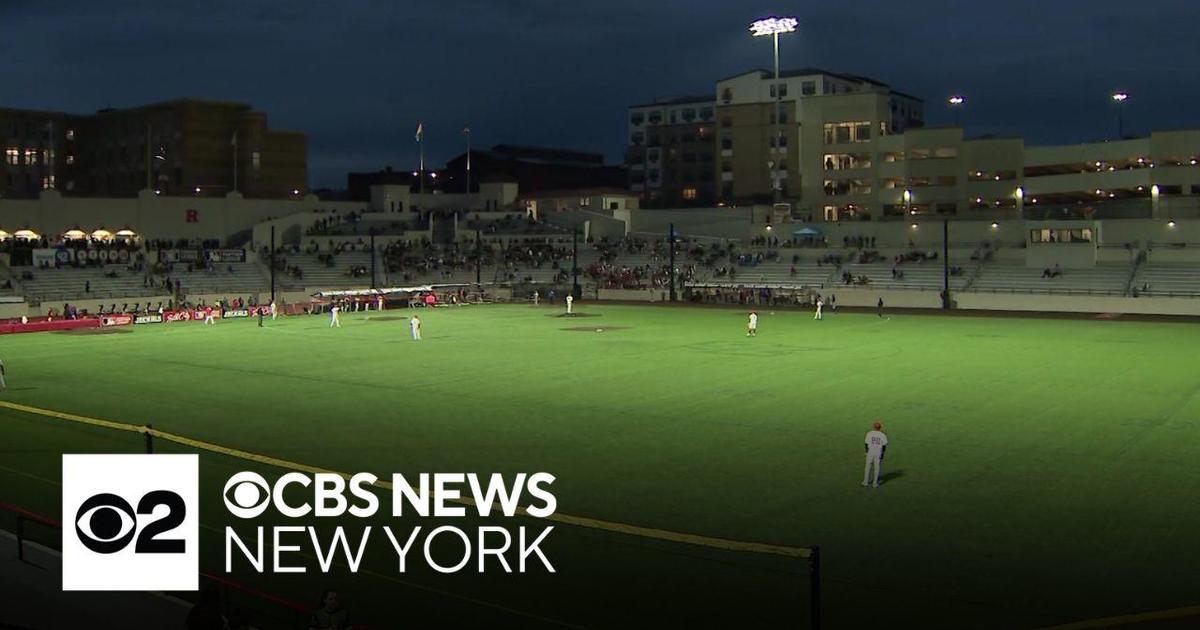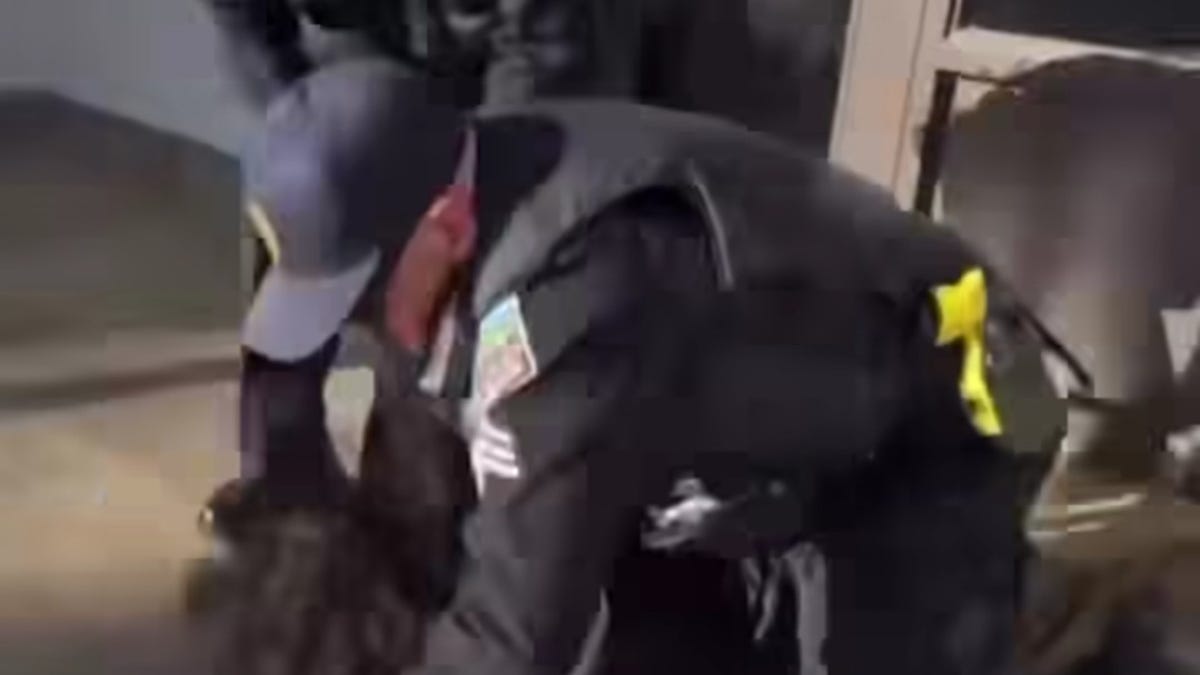Oregon
Ducks rally to beat Cal in Pac-12 baseball tournament, boosting regional hopes

With the season teetering on the precipice and another defeat in the Pac-12 baseball tournament dangerously close, Oregon Ducks senior Gavin Grant decided it was time for a chat.
So in the bottom of the eighth inning, with the Ducks trailing 2-1, he called his teammates together for a huddle inside the first base dugout at Scottsdale Stadium. The second baseman reminded everyone how hard they had worked this season, how much time they put into the game they love, and urged them to come together for just two innings and save their season.
“Play team baseball,” Tanner Smith said, recalling Grant’s final words. “And just really believe in ourselves.”
And the Ducks responded.
Oregon scored two runs in the eighth inning to defeat the Cal Bears 3-2 Tuesday night in the first day of pool play in Scottsdale, Arizona, using a timely error and a sacrifice fly in the eighth inning to earn a crucial come-from-behind victory.
The sixth-seeded Ducks (34-20) will take Wednesday off before playing No. 1 seed Stanford at 7 p.m. Thursday in the final round of pool play. If they beat the Cardinal — which they did twice in the regular season — the Ducks would clinch a berth to the semifinals and all but lock a trip to the regionals of the NCAA baseball tournament.
Oregon is projected to earn an at-large bid by multiple websites, thanks in part to a No. 39 ranking in the RPI and 16 regular-season wins in the Pac-12. But the Ducks sputtered down the stretch of the season, finishing 13-13 over the final 26 games, including a dismal 3-7 in May. So Tuesday’s win — and Grant’s eighth-inning chat — was crucial, if not critical.
Grant doesn’t speak up often, Smith said, so when he does it carries weight. Oregon wasted little time answering his challenge against the Bears (24-27).
Sabin Ceballos started the rally with a leadoff single to left and Smith followed with a double off the glove of Cal right fielder Kade Kretzschmar, who appeared to make a nice running catch on the play but couldn’t keep hold of the ball. It would not be the last time a Cal player failed to make a key play in the inning.
Three pitches later, Drew Smith smacked a routine grounder to shortstop, seemingly stalling the rally. But Cal shortstop Carson Crawford booted the ball and Bryce Boettcher — who had entered the game as a pinch runner for Ceballos — scored easily to even the score 2-2. That sent Jacob Walsh to the plate with runners on the corners, and the sophomore first baseman hammered the first pitch he saw to deep center field, sending Smith home with a sacrifice fly.
The late-game rally salvaged an otherwise frustrating offensive performance by the Ducks, who finished with 11 hits, but went 0 for 8 with runners in scoring position. The team that scored 24 runs in its final two regular-season games and set a school record for home runs was left feeling frustrated most of the game, especially in fourth and fifth, when inning-ending double plays sabotaged potential big innings.
The gutsy comeback, combined with the those momentum-building wins at Utah, could suggest bigger things are coming for the Ducks, who earned their first conference tournament victory after going 0-2 last year.
“Time will tell,” coach Mark Wasikowski said. “They answered the bell three different times in a row now. So that’s what it says about them right now. Hopefully it turns into something bigger and we can go from there. But right now, it says they did it three times in a row when their backs were against the wall and they played tough.”
Tanner Smith went 3 for 4 with two runs scored, Drew Smith added two hits and an RBI, and Bennett Thompson finished 1 for 2 with a walk and a second-inning sacrifice fly. But it was the Ducks’ injury-ravaged pitching staff that delivered the win Tuesday.
Freshman left-hander Grayson Grinsell made his first career start and fought through four hits — including a triple and two doubles — to allowed just two runs in three innings. The bullpen was exceptional from there, combining to surrender just two hits and two walks, while recording seven strikeouts, over the final six innings.
Logan Mercado (5-1) earned the win, striking out two in 1 1/3 innings, and Josh Mollerus pitched a scoreless ninth for his ninth save.
And even though he struck out three times and failed to record a hit, Grant delivered perhaps the biggest moment of all inside the dugout, gathering the Ducks for a season-saving talk.
“It’s so influential,” Smith said of Grant’s words. “Just to be able to hear his voice. It’s calming in big moments and it really kind of puts the right perspective … in our heads of what we need to do and … how much we need to just slow the game down and really just appreciate the moment.
“I think Gavin has a really good feel as far as when the moment requires him to kind of use his voice as a leader and step up in situations like that. And it seems like every time he does, the team really responds really well.”
Joe Freeman reported from Scottsdale, Arizona.
— jfreeman@oregonian.com | 503-294-5183 | @BlazerFreeman | Subscribe to The Oregonian/OregonLive newsletters and podcasts for the latest news and top stories.

Oregon
“What is Oregon Ducks’ NIL Revolutionary Division Street?”

If you follow Oregon Athletics or any of its student-athletes on social media you have most likely seen posts promoting DOAF also known as “Ducks of a Feather” or even Oregon sneaker collaborations with the notorious site GOAT, a platform to buy and sell sneakers, apparel, and accessories.
But what are these products and why are so many Oregon athletes promoting them? These products and exclusive collaborations are a part of Oregon’s name, image, likeness revolutionary, ‘Division Street.’
Division Street is an NIL collective formed by Oregon alumni and donors such as The Papé Family, Jim Morse, Ed Maletis, and the shoe dog himself, Phil Knight. Division Street aims to empower student-athletes to navigate the NIL landscape and maximize their earning potential.
“Our goal is to elevate the athlete experience by bringing in leading expertise across brand, marketing, sponsorship, digital and creative to support all University of Oregon student-athletes, inclusive of every sport and across gender,” said Division Street CEO Rosemary St. Clair.
Oregon is home to some of the nation’s top NIL earners. Currently,two Oregon Ducks are Top-10 earners. Football players Dillon Gabriel and Evan Stewart, both high-profile transfers, rank in the top 10 of NIL earners nationally. They currently have On3 NIL values of 1.4 million dollars (Gabriel) and 1.3 million (Stewart). Although neither of these athletes have played an in-season game yet for Oregon, Division Street has played a key role in their success.
Not only is Division Street helping student-athletes reach their financial goals, but it also helps in positioning them to give back to their community. Gabriel used NIL money to give jerseys to his high school alma mater in Hawaii.
“It’s been easy for me and supernatural because this is something that I’ve always wanted to do,” Gabriel told Pete Nakos of On3. “When NIL started out, I just gave sneakers to the basketball team and accessories. Super small, right? If we look at it in, in this case, it’s a small thing, but it could change somebody’s life. It could completely impact somebody’s life.”
Another Oregon athlete who is using NIL to give back is Men’s basketball center, N’Faly Dante. Dante is using his earnings to build a house for his mother Assetou Diabate.
“For basketball players from Africa, we’re not just representing our family or our city, we’re representing our country,” Dante said. “We have a lot of kids looking up to us. We’ve got to do things the right way and show them how to do it.”
It is bigger than sports, money, and NIL. Division Street has helped athletes set positive examples off the field and court.
Former Oregon athlete and current WNBA star, Sabrina Ionescu is also involved in Division Street and serves as its Chief Athlete Officer.
“As an athlete navigating the world of brand and partnerships myself, I see a real opportunity to provide today’s college players more professional counsel as they grapple with the new NIL landscape,” said Ionescu.
The world of NIL and collegiate athletics as a whole is always changing. Division Street aims to help athletes navigate these changes and prepare them for a better future.
Oregon
Our picks, your votes: The best outfielders in Oregon’s Class 6A softball
As the spring season continues, The Oregonian/OregonLive wanted to take a look at the top outfielders in Oregon’s Class 6A softball scene.
Here is a look at some of the top players in the outfield. Below, vote for who you think is the best outfielder in the state.
Lauren Beach, senior, Lakeridge
Oregon
‘Killer whale predation’: Gray whale washes up on Oregon beach covered in tooth marks
Watch: Trio of whales swim near paddleboarder
A group of three curious whales swam next to a paddleboarder off the Dana Point, California coast.
A deceased gray whale calf with tooth marks all over its body was found on a beach in Oregon this week.
Jim Rice, a program manager with the Oregon Marine Mammal Stranding Network, told USA TODAY he was notified Tuesday of the 20-foot gray whale calf that washed ashore at Tish-A-Tang Beach in Bandon, Oregon.
Bandon is located in southern Oregon along the Pacific Ocean, about 140 miles southwest of Eugene.
The calf had widespread tooth marks over its body and “major trauma to the lower jaw and the underside of the body,” which Rice said indicated that it had recently died of severe injuries caused by “killer whale predation.”
What do whales eat? Inside the diet of blue, humpback, sperm and killer whales
What is a gray whale?
Gray whales are large whales, up to 49 feet long and weighing about 90,000 pounds. They have one of the longest migration patterns of any mammal, often traveling 10,000 to 14,000 miles round trip.
According to the National Oceanic and Atmospheric Administration, they earned the nickname “devil fish” because of their aggressive response when harpooned by hunters. They were hunted nearly to extinction, but thanks to commercial whaling moratoriums and conservation efforts, they are now a protected species.
They mainly eat amphipod crustaceans, according to the Alaska Department of Fish and Game, and their only major predators are humans and killer whales.
Where are gray whales found?
Although they were once common throughout the Northern Hemisphere, gray whales are now mainly found in the North Pacific Ocean, according to NOAA.
-

 Politics1 week ago
Politics1 week agoStefanik hits special counsel Jack Smith with ethics complaint, accuses him of election meddling
-

 Politics1 week ago
Politics1 week agoThe White House has a new curator. Donna Hayashi Smith is the first Asian American to hold the post
-

 World1 week ago
World1 week agoTurkish police arrest hundreds at Istanbul May Day protests
-

 News1 week ago
News1 week agoVideo: Police Arrest Columbia Protesters Occupying Hamilton Hall
-

 Politics1 week ago
Politics1 week agoAdams, NYPD cite 'global' effort to 'radicalize young people' after 300 arrested at Columbia, CUNY
-

 Politics1 week ago
Politics1 week agoNewsom, state officials silent on anti-Israel protests at UCLA
-

 News1 week ago
News1 week agoPolice enter UCLA anti-war encampment; Arizona repeals Civil War-era abortion ban
-

 News1 week ago
News1 week agoSome Republicans expected to join Arizona Democrats to pass repeal of 1864 abortion ban















